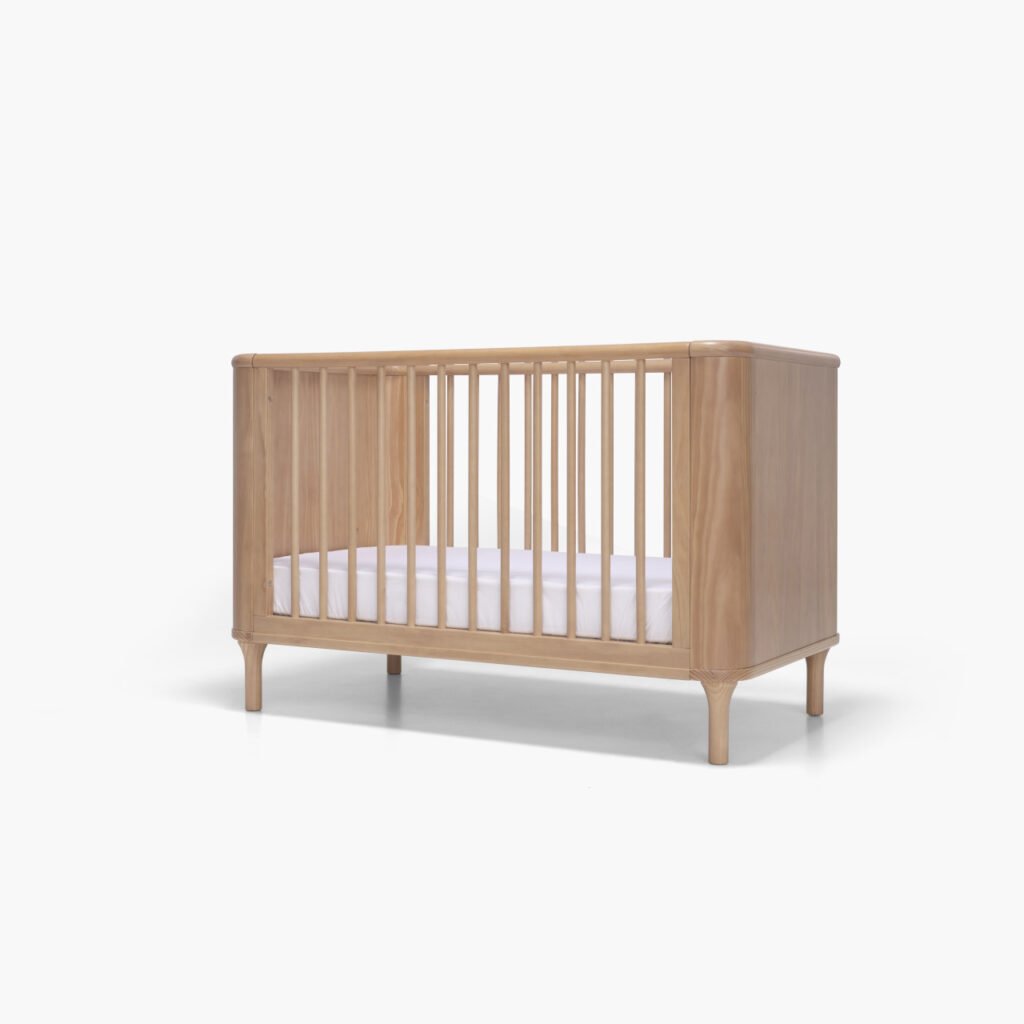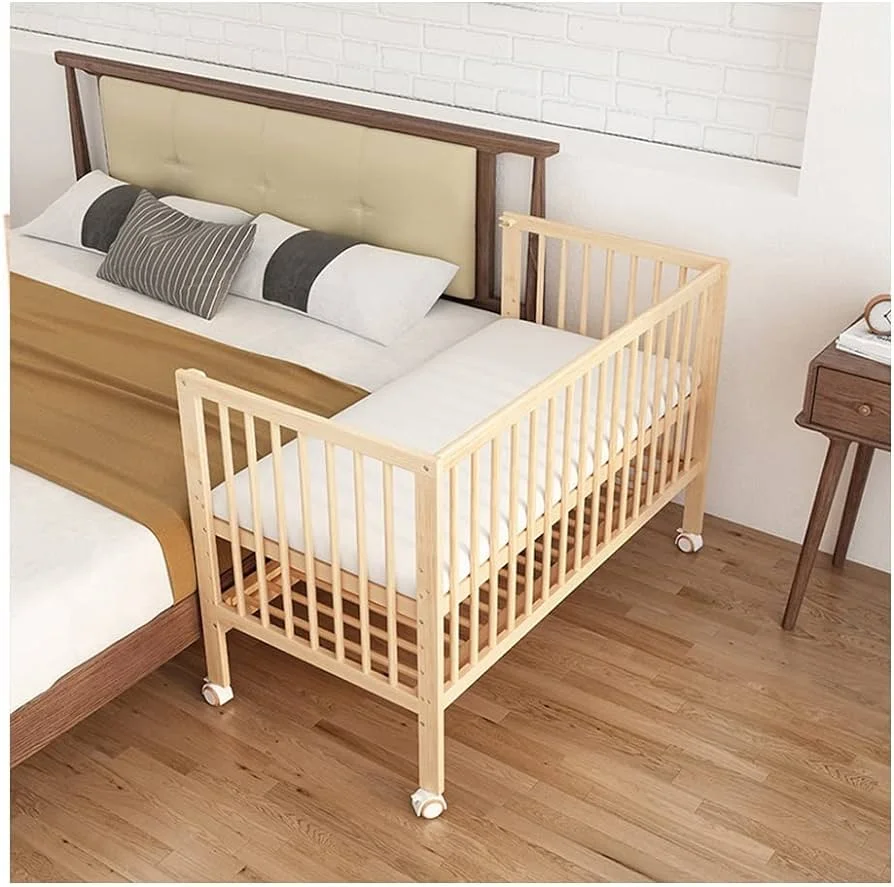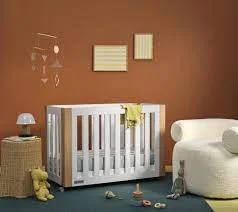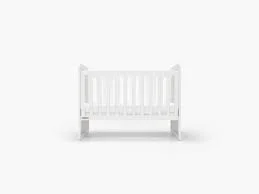Deciding on the perfect sleeping arrangement for your baby can be a monumental choice, with safety, comfort, and style at the forefront of most parents’ minds. A timber cot represents more than just a sleep solution; it embodies durability, natural beauty, and timeless appeal. While navigating through the many options of baby nursery furniture, parents are increasingly leaning towards timber cots as a preferred option. This shift towards wooden, natural cots not only underscores a commitment to aesthetic value but also to environmental friendliness and health benefits, making it a significant consideration for modern nurseries.
This article jumps into the various types of timber cots, including white and timber cot options, natural wood cots, and specifically timber cots Australia has to offer, underscoring their benefits over other materials. We will talk more about the safety standards and features that these natural timber cots must meet to ensure they provide a safe sleeping environment for infants. Additionally, tips on choosing the suitable timber cot for your nursery will guide parents through the large number of options available, helping them make a well-informed decision. In conclusion, we aim to provide a comprehensive overview, highlighting why a timber cot could be the best choice for your baby’s nursery, balancing function, style, and safety.
Types of Baby Timber Cots
Standard Timber Cots

Standard timber cots are designed to offer a reliable and sturdy sleeping solution for babies. Typically, these cots are ideal for parents who either use a bassinet in the master bedroom initially or have sufficient space to accommodate a standard-size cot directly in the nursery. The advantage of standard timber cots lies in their durability and the ease with which they can be moved from one room to another, should the need arise, without disassembly.
Convertible Timber Cots

Convertible timber cots provide exceptional versatility and long-term value. They can transition from a bassinet to a baby cot and later into a toddler bed or even a full-sized bed and sofa without the need for additional parts. This adaptability makes convertible timber cots a popular choice among parents planning for the future.
Compact Timber Cots

For families with limited space, compact timber cots are an excellent choice. These cots are designed to occupy minimal space while still maintaining the quality and functionality essential for a good night’s sleep. Compact cots often come with castors or wheels, making them easy to move across different rooms. They are sized to pass through standard doorways, adding to their convenience. Additionally, these cots usually feature two base heights, accommodating the growth of a child from infancy through to the toddler years.
Benefits of Choosing Timber Cots

Durability and Longevity
Timber cots are renowned for their durability, often lasting for many years without needing replacement. This makes them a cost-effective choice for families, as they can be used for subsequent children, providing significant long-term savings. Moreover, the construction of timber cots ensures they can withstand the usual wear and tear in a family setting, often featuring warranties that underscore their longevity and quality.
Eco-Friendly Material
Choosing timber cots supports environmental sustainability. Many are crafted from sustainably sourced materials like FSC-certified wood, which helps conserve forests and maintain ecological balance. Additionally, wood is a biodegradable material, unlike plastics and metals, which can take about centuries to decompose, thus minimizing environmental impact. The manufacturing process of timber cots often involves eco-friendly practices, including the use of non-toxic finishes and the recycling of wood chippings, further reducing the carbon footprint.
Aesthetic Appeal
Timber cots bring natural beauty and warmth to any nursery, creating a cozy and inviting atmosphere. Wood’s inherent aesthetics, with its unique grain patterns and warm tones, contribute to a calm and soothing environment, ideal for a baby’s room. Wood’s versatility also allows for a wide variety of designs, all the way from classic to modern, making it easy to integrate into various nursery themes while adding an element of timeless elegance.
Safety Standards and Features
Australian Safety Standards
Timber cots in Australia must follow strict safety standards, notably the Australian Safety Standard AS/NZS 2172-2003, the most recent standard for cots. This ensures that all cots sold, whether online or in stores, meet high safety criteria to protect infants. It is crucial for parents to verify that any cot, whether new or second-hand, complies with these standards to ensure the safety of their child.
Key Safety Features to Look For
- Spacing and Depth Requirements: The bars or panels of the cot should be spaced between 50 mm and 95 mm apart to prevent babies from trapping their heads, arms, or legs. Additionally, the cot must have a minimum depth of 600 mm from the bottom of the mattress to the top of the cot to ensure good protection as the child grows.
- Mattress Fit and Gaps: Ensure the gap between the mattress and the sides and ends is less than 20 mm to prevent any risk of entrapment. This close fit helps in maintaining the cot’s safety by eliminating spaces where a child’s limbs could potentially get stuck.
- Construction and Materials: When selecting a timber cot, check for any sharp edges, small holes, or small openings between 5 mm and 12 mm that could trap a child’s fingers. Also, confirm there are no hazardous gaps or footholds that could endanger your child’s safety.
- Legibility and Information: Cots must have clear, durable, and prominent markings that provide essential information about the supplier, recommended mattress size, and the use of adjustable bases if available. This helps to ensure correct assembly and usage, which are critical for safety.
- Compliance and Testing: To comply with mandatory standards, it is recommended that cots undergo rigorous testing for impact, strength, load, durability, and stability. Parents should look for cots that have been tested and certified by recognized testing organizations to ensure they meet all required safety standards.
Parents can provide a safe and secure sleeping environment for their infants by adhering to these guidelines and choosing cots that meet Australian safety standards.
Choosing the Right Timber Cot for Your Nursery
Size and Space Considerations
When selecting a timber cot, it’s essential to consider the nursery’s available space. For families with limited room, a compact baby cot is advisable as it maximizes space without compromising quality. These cots often come equipped with wheels, making them easy to move, and can fit through standard doorways, which is beneficial if the cot needs to be moved between rooms. Additionally, the choice between standard sizes like 120x60cm or larger options at 140x70cm should be dictated by both the size of the nursery and the desired longevity of the cot usage as your child grows.
Style and Design Preferences
The aesthetic appeal of a timber cot should match with the overall design theme of your nursery. Convertible cots offer long-term value, transitioning from a baby cot to a toddler bed and sometimes even into a full-sized bed. The material of the cot also plays a significant role in both style and safety; options like beechwood and pine wood are not only visually appealing but also offer durability. For those who prioritize eco-friendliness, seeking out cots made from sustainably sourced materials like FSC-certified timber is recommended.
Budget and Pricing
Budget considerations are crucial when choosing a suitable timber cot. It’s important to note that prices can change significantly, with some cots starting as low as $199 and going up to $799, depending on the brand and style. Investing in a cot that meets Australian safety standards can ensure that you are purchasing a product that is safe and durable, potentially saving money in the long term by avoiding the need to replace substandard items. Always consider the warranty offered, as this can provide additional value and peace of mind over the years of usage.
Conclusion
Through the exploration of timber cots, from the types available to the key features parents should consider, this article has highlighted the importance of durability, aesthetics, safety, and environmental sustainability in choosing the right sleeping arrangement for your baby. The range of options, following the standard convertible and compact timber cots, ensures that there is a solution for every nursery, aligning with both functional needs and design preferences. Emphasis on sticking to Australian Safety Standards reaffirms the commitment to making sure its a secure environment for infants, showcasing that safety does not have to compromise style or environmental principles.
As parents navigate the selection of options in setting up a welcoming and safe nursery, the selection of a timber cot stands out as a decision that marries tradition with modern needs. The benefits of choosing a timber cot – longevity, natural beauty, and the assurance of a healthy, safe sleep environment – make it a convincing choice for any family. Encouraging further research and careful consideration of individual nursery requirements will ensure that parents make an informed decision, setting the stage for countless peaceful nights and joyful days in the life of their newest addition.
FAQs
Are wooden cribs a safe choice for infants?
Yes, wooden cribs can be safe for infants as long as they adhere to critical safety standards and are made from high-quality materials. Advances in manufacturing technology have significantly improved the safety features of wooden baby cribs.
What should I consider when selecting a cot for my baby?
When purchasing a cot, important factors to consider include safety, ease of use, size, and features. Additionally, consider whether you prefer a new or second-hand cot, ensure it fits your style and budget, and review options like porta cots by consulting a portable cot buying guide.
Which is better for a nursery: metal or wood cribs?
While both materials have benefits, it is important to note that solid wood cribs may not be as durable as metal cribs. Wood is stable but more susceptible to scratches than metal. However, minor scratches on wood can be easily fixed using furniture markers.
Why is a cot an important item for a baby’s nursery?
A cot provides a secure and safe sleeping environment for a newborn, and it is the first sleeping arrangement most parents consider. It features high sides to protect the baby, and these sides are typically fixed to prevent accidental lowering. Additionally, the height of the mattress can usually be adjusted as the baby grows, accommodating their changing needs.





